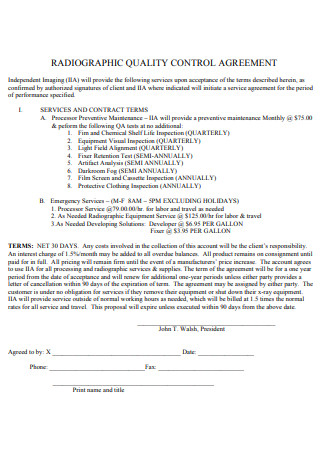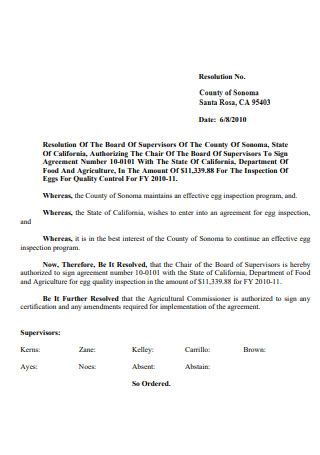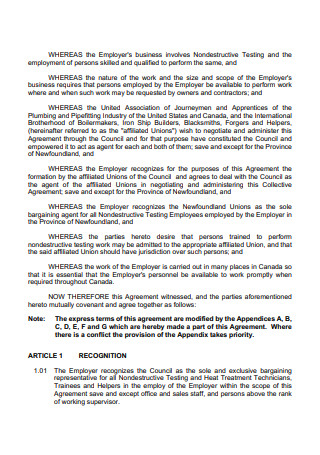3+ Sample Quality Control Agreement
FREE Quality Control Agreement s to Download
3+ Sample Quality Control Agreement
What Is a Quality Control Agreement?
What Are the Benefits of a Quality Control?
What Are the Types of Quality Control?
Elements of a Quality Control Agreement
Steps in Writing a Quality Control Agreement
FAQs
Is a quality agreement a legally binding contract??
Why is Quality Control Important for Businesses?
What is the importance of quality control?
What Is a Quality Control Agreement?
Quality is not something that can be defined in one way. Despite the ambiguous definition of the term “value,” quality control is the process by which products and services are tested and measured to ensure that they meet a specified standard. Through this process, a company can assess, maintain, and improve the quality of its products and services. At the end of the day, quality control has two primary objectives: (1) to ensure that products are as uniform as possible; and (2) to reduce the number of errors and inconsistencies that occur within them.
Other templates are available on our website, and you can use them whenever you need them. They are as follows: non solicitation agreement, buyout agreement, work contract, Labor Contract, position agreement, staffing agreement, business lease proposal, work agreement, migration plan, tenancy contract, security bid proposal, and other similar templates are available.
What Are the Benefits of a Quality Control?
In the long run, investing in quality control procedures can help to maintain a company’s brand, prevent products from becoming unreliable, and boost consumer confidence in the company’s products. These procedures are established through the use of rigorous methodology and testing, as well as industry standards and best practice guidelines. Furthermore, quality control is crucial because it assures that a corporation will look at evidence-based data and research — rather than just anecdotal observations — to ensure that items are performing up to their standard of excellence. In order to ensure that the product meets both manufacturing requirements and consumer demand, quality control must be a continual process rather than a one-time event. No consumer wants to take the chance of utilizing a product that could put them in danger or fail to meet their expectations. When quality control is neglected, a company’s reputation, dependability, and efficiency are all jeopardized. The testing of a product can also have an impact on marketing and sales because it can increase consumer confidence in the product.
What Are the Types of Quality Control?
The same way that “quality” is a relative term with many different interpretations, “quality control” does not follow a standard, universal method. Some approaches are exclusive to a particular industry. Consider the case of food and drug items, where mistakes can put people’s lives in danger and result in considerable liabilities. These industries may place a greater emphasis on scientific measures, whereas others (such as teaching or coaching) may demand a more holistic, qualitative approach. Quality control, at its foundation, necessitates meticulous attention to detail as well as sound research technique. Among the several quality control methods available are the following:
1. Control Charts
When studying how systems change over time, a graph or chart is utilized to aid in the analysis. The statistical analysis of business and manufacturing processes is used to determine whether or not they are “under control.”
2. Process Control
Processes are reviewed and tweaked to assure quality and increase overall performance, among other things. Consistency is often achieved through a technical process that employs feedback loops, industrial-level controls, and chemical procedures to produce the desired result.
3. Acceptance Sampling
When determining whether or not a batch or sample of items fits the overall production standard, a statistical measure is employed.
4. Process Control
A mapping methodology that helps to improve the design and implementation processes by establishing evaluative indicators for each phase in the design and implementation processes.
Elements of a Quality Control Agreement
Given the quick summary of what a quality control agreement is, the essence of the agreement has already been put out for the readers to understand. However, due to the amount of legal significance that the agreement possesses, as well as the nature of the parties’ transactional connection, it is necessary to deconstruct the most relevant sections of the instrument. Learning about and becoming familiar with the content of a quality control agreement can help you predict your future duties, as well as the crucial things to consider if you have decided to sign such a document in the future.
Steps in Writing a Quality Control Agreement
Quality control agreements are one of the most significant foundational papers that must be completed prior to the execution of an assurance test. It is on a level with product test plans, which are sketches of the process of execution in and of themselves, rather than the product itself. The former is concerned with the players involved in the quality control test in detail, whilst the latter is concerned with the dynamics of the test. Still, the most crucial, and possibly the most significant, aspect of the subject at hand is, of course, the test itself, which is why you should become familiar with the procedures that must be followed in order to administer one.
-
1. Quality Control and Management Software
During the course of a project’s execution, software tools are extremely vital and beneficial.. While your program, for example, is being launched, it assists you in maintaining organized and your teams in sync with one another. Prepare a solid and reliable quality management software before conducting your quality assurance test. This is the first step you can take to ensure that your quality assurance test is successful. Quality management software is also often effective in the field of risk management.
-
2. Include the Viewpoint
When the test begins, it is critical for you and the various teams that you may be working with to pay attention to the nature of the product as it is being used. You will be able to identify any bugs or flaws that need to be addressed in post-production. In order to transmit the information to the team responsible for processing that particular compartment of the project, you may want to make notes on your observations during this time period. Consider writing down any positive aspects of the product you notice, such as the smoothness of the manufacturing process, the safety and the durability of the product, so that you can remember the things that were successfully produced for the project.
-
3. Make Use of Feedback
Perhaps you will have acting clients who will use the product first in order for external parties to measure the promised purpose of your asset, or you may have a set of professional teams who will provide feedback on the product’s performance during its initial run. Because the success of your product is largely dependent on the acceptance of consumers, you can gain valuable information and suggestions for improvement from third parties throughout the Feedback process. Additionally, post-surveys may be beneficial in order to obtain a more tangible and quantitative outcome.
4. Make Revisions as Necessary
With quality control, it is impossible to avoid mentioning the need for ongoing product improvement to fulfill customer expectations. Quality assurance is all about determining whether or not a product is ready to be sold. Revisions might take place on a large or small scale, ranging from a simple change in a few lines of code to a major overhaul of your workforce or manufacturing processes.
-
5. Analyze the Outcomes
You can begin evaluating the results of your product once it has been released. In this phase, you can compare your primary expectations to real-world data, which is one of the first concepts written in your test plan. Although you may have high hopes for your product, it’s likely that when it becomes part of people’s everyday lives, fresh information and insights will emerge that prove your expectations were not entirely irrational. At the end of the day, you are still the one who determines whether or not the product is a success.
The person in charge of quality control is responsible for ensuring that the results are communicated to the right people. Scientific and research-based thinking can be effectively disseminated by a good quality control professional, who can assist in the problem solving process. An important part of the product design process is the involvement of these experts, who decide whether or not a company’s innovation is suitable for the market.
FAQs
Is a quality agreement a legally binding contract??
Yes. Signing it brings the law into the quality assurance transaction by establishing the contractual connection between the parties involved.
Why is Quality Control Important for Businesses?
Repeat business is earned through quality-control systems. They also prevent wasteful costs and liability claims and lawsuits.
What is the importance of quality control?
Quality control is critical to delivering products that meet or exceed client expectations.
Investments in quality control in the background are well worth it because it makes your product more desirable and appealing. Creating a team to act as the project’s pillars is an important part of managing a product’s quality, therefore it’s important to have a comprehensive quality assurance agreement in place. All parties are legally committed to their commitments and responsibilities when they sign an agreement of quality assurance, but it also serves as a safeguard in the event that something goes wrong. Conclusions: The agreement serves as an important safeguard for your investments, ensuring a bright future for the ones you’ve made.




